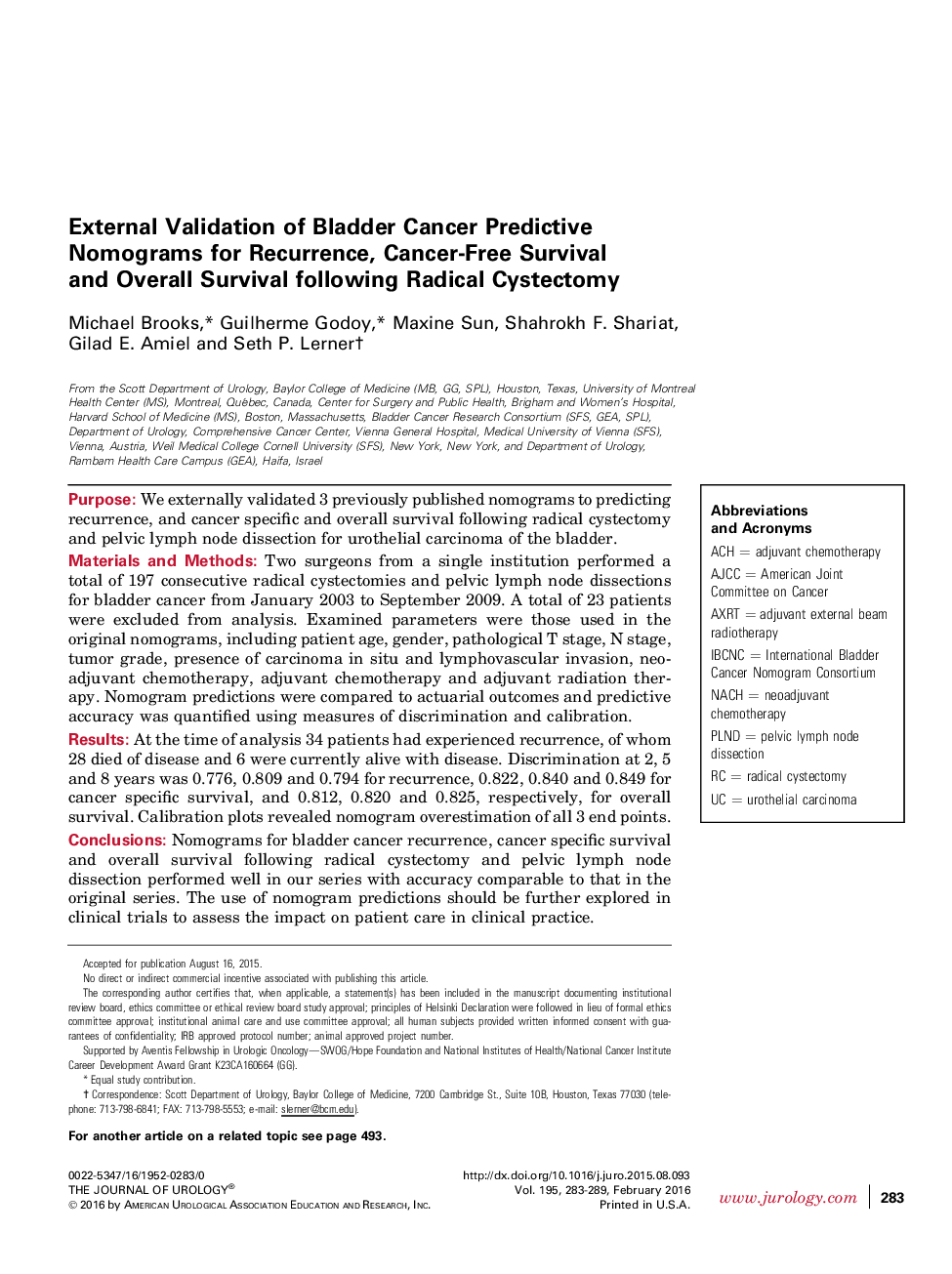| Article ID | Journal | Published Year | Pages | File Type |
|---|---|---|---|---|
| 3858273 | The Journal of Urology | 2016 | 7 Pages |
PurposeWe externally validated 3 previously published nomograms to predicting recurrence, and cancer specific and overall survival following radical cystectomy and pelvic lymph node dissection for urothelial carcinoma of the bladder.Materials and MethodsTwo surgeons from a single institution performed a total of 197 consecutive radical cystectomies and pelvic lymph node dissections for bladder cancer from January 2003 to September 2009. A total of 23 patients were excluded from analysis. Examined parameters were those used in the original nomograms, including patient age, gender, pathological T stage, N stage, tumor grade, presence of carcinoma in situ and lymphovascular invasion, neoadjuvant chemotherapy, adjuvant chemotherapy and adjuvant radiation therapy. Nomogram predictions were compared to actuarial outcomes and predictive accuracy was quantified using measures of discrimination and calibration.ResultsAt the time of analysis 34 patients had experienced recurrence, of whom 28 died of disease and 6 were currently alive with disease. Discrimination at 2, 5 and 8 years was 0.776, 0.809 and 0.794 for recurrence, 0.822, 0.840 and 0.849 for cancer specific survival, and 0.812, 0.820 and 0.825, respectively, for overall survival. Calibration plots revealed nomogram overestimation of all 3 end points.ConclusionsNomograms for bladder cancer recurrence, cancer specific survival and overall survival following radical cystectomy and pelvic lymph node dissection performed well in our series with accuracy comparable to that in the original series. The use of nomogram predictions should be further explored in clinical trials to assess the impact on patient care in clinical practice.
